What is Content Security Policy (CSP) and how does it help mitigate the risk of XSS attacks?
Content Security Policy (CSP) is a security mechanism implemented in web applications to mitigate the risk of Cross-Site Scripting (XSS) attacks. XSS attacks occur when an attacker injects malicious scripts into a website, which are then executed by a victim's browser. These scripts can steal sensitive information, manipulate content, or perform other malicious activities.
CSP works by allowing website administrators to define a set of policies that specify which sources of content are considered trustworthy and can be loaded by a web page. These policies are communicated to the browser through the Content-Security-Policy HTTP response header or the meta tag in the HTML document.
By defining a Content Security Policy, web application developers can restrict the types of content that can be loaded and executed by a web page. This helps to prevent the execution of malicious scripts injected by attackers. CSP provides several directives that can be used to define these restrictions, including:
1. "default-src": Specifies the default source for content such as scripts, stylesheets, and images. This directive is used when no other directive is specifically defined for a particular type of content.
2. "script-src": Specifies the sources from which scripts can be loaded. By limiting the allowed sources, developers can prevent the execution of malicious scripts from untrusted domains.
3. "style-src": Specifies the sources from which stylesheets can be loaded. This directive helps to prevent the inclusion of malicious stylesheets that can manipulate the appearance or behavior of a web page.
4. "img-src": Specifies the sources from which images can be loaded. By restricting the allowed sources, developers can prevent the loading of images that contain malicious code or serve as a carrier for attacks.
5. "frame-src": Specifies the sources from which frames or iframes can be loaded. This directive helps to prevent clickjacking attacks by restricting the embedding of web pages from untrusted sources.
6. "connect-src": Specifies the sources to which the web application can make network requests. This directive helps to prevent data exfiltration by limiting the destinations to trusted domains.
These are just a few examples of the directives provided by CSP. Developers can customize the policy based on the specific requirements of their web application. It is important to note that CSP operates on a whitelist approach, meaning that only the specified sources are allowed, and all other sources are blocked by default.
By implementing CSP, web application developers can significantly reduce the risk of XSS attacks. When an attacker attempts to inject malicious scripts into a web page, the browser, following the CSP policies, blocks the execution of these scripts if they are not from trusted sources. This prevents the attacker's scripts from running and protects the users of the web application from potential harm.
Content Security Policy (CSP) is a security mechanism that helps mitigate the risk of XSS attacks by allowing web application developers to define a set of policies that restrict the sources of content that can be loaded and executed by a web page. By implementing CSP and properly configuring its directives, developers can protect their web applications and their users from the harmful effects of XSS attacks.
Other recent questions and answers regarding Cross-site scripting:
- Do stored XSS attacks occur when a malicious script is included in a request to a web application and then sent back to the user?
- Describe how an attacker can inject JavaScript code disguised as a URL in a server's error page to execute malicious code on the site.
- Explain how AngularJS can be exploited to execute arbitrary code on a website.
- How does an attacker exploit a vulnerable input field or parameter to perform an echoing XSS attack?
- What is cross-site scripting (XSS) and why is it considered a common vulnerability in web applications?
- What is the proposed solution in the research paper "CSP is dead, long live CSP" to address the challenges of CSP implementation?
- What are the limitations and challenges associated with implementing CSP?
- How does Content Security Policy (CSP) help protect against XSS attacks?
- What are some common defenses against XSS attacks?
- What is cross-site scripting (XSS) and why is it a significant security concern for web applications?
View more questions and answers in Cross-site scripting

